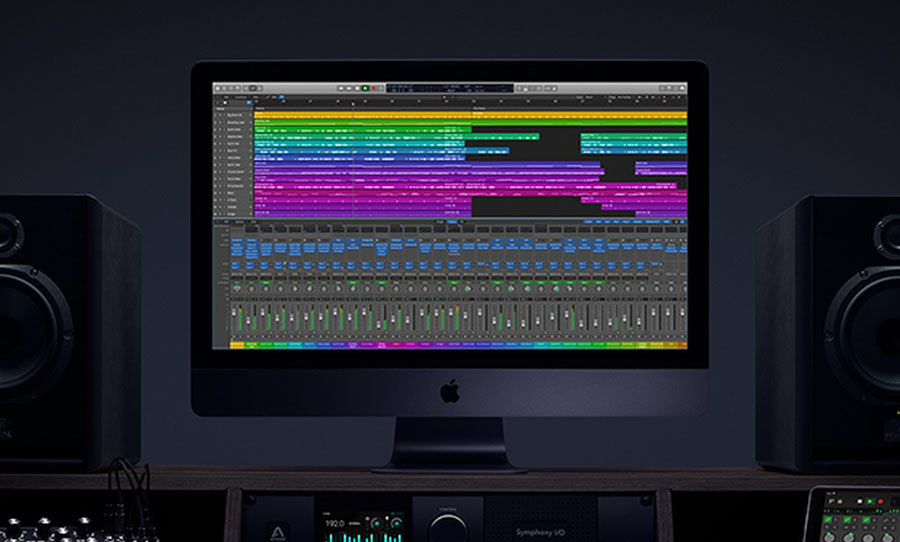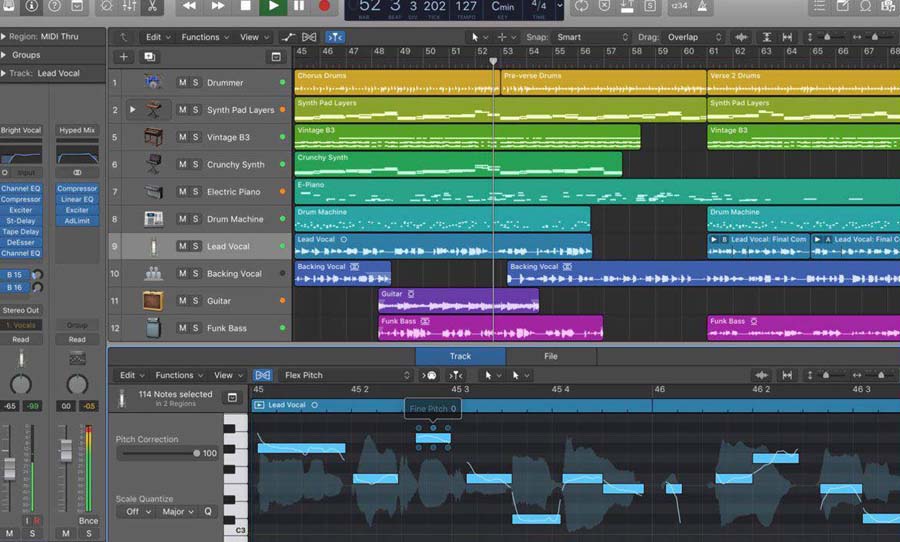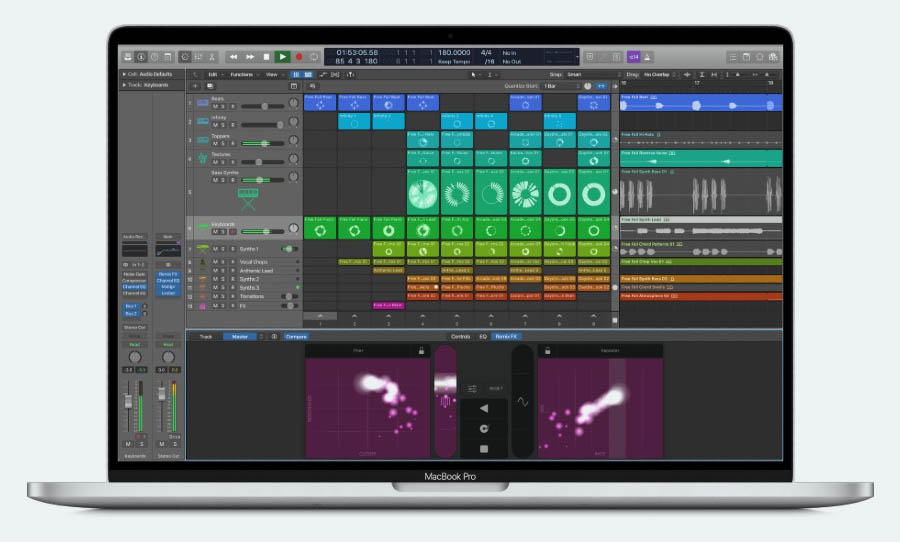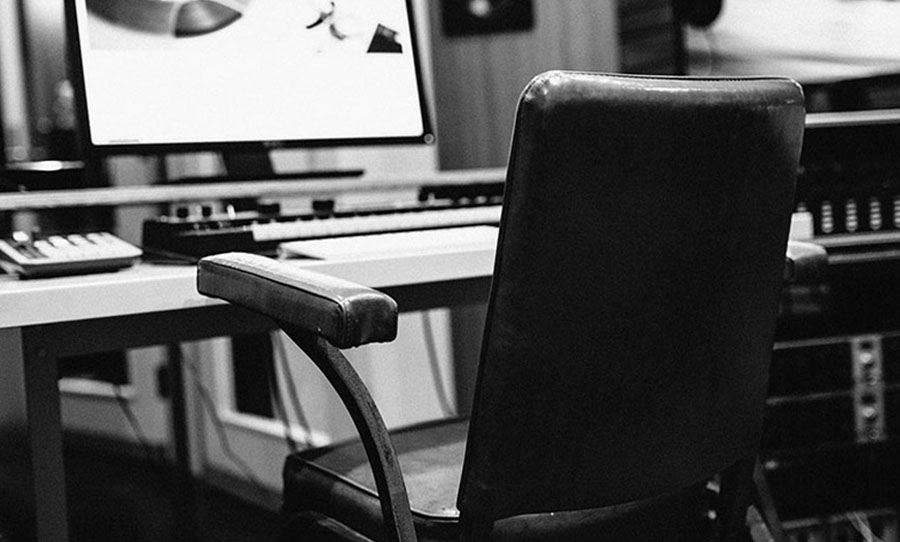Logic Pro, the Mac-only DAW, started life with a humble purpose. It’s gone onto become wildly successful, equally at home in the professional and project studio.
Judging by looks alone, it’s natural to assume that Logic Pro is the extension of everyone’s favourite first DAW, Garageband (if you’re on a Mac). The origins of Logic, however, stretch way back into the early days of computer recording and before it became a Mac-only application.
In fact, Logic’s journey to become a DAW equally suited to the rigours of recording audio and making music from scratch has rendered the software unrecognisable from its first form.
In fact, it was the latter quality – the ability to produce music from scratch – that set Logic apart in the early days. In the ’90s, the world wasn’t spoiled for choice in DAWs. Logic, however, offered a deeper feature set for creating and editing with virtual instruments – ‘in the box’ production was born.

The Atari days
We are blessed to be music creators in an age awash with ultra-high power and reasonably priced multi-core processors. Of course, it wasn’t always like this and early developers of music production software hard some hard barriers to contend with.
This didn’t stop Logic’s parent company, Emagic, from embracing all that the technology could offer. The proto-version of Emagic, C-Lab, specialised in MIDI based notation and software environments for Commodore 64 and Atari ST computers.
A group of programmers left C-Lab and formed Emagic. The first version of Logic was called Notator Logic. Owing to the Atari’s inexorable path toward becoming obsolete, this early form of the software struggled to keep up with its competitors. The company eventually slimmed-down it’s branding (going simply with Logic) and importantly, got on the Windows and Mac OS train. As these platforms came to dominate home computing, Logic became more and more powerful.
Mac only
On July 1, 2002, Apple bought out Emagic, becoming the first computer company to own a music production software. It also coincided with the discontinuation of Logic’s relationship with Windows. All-in-all, it was an aggressive takeover – if you wanted to use Logic, you needed a Mac.
Logic 6 soon followed and it wasn’t long before Logic adopted the ‘Pro’ moniker, which provided a neat delineation from the scaled-down version of Logic Express. With the release of Logic Pro 7 in 2004, the user interface was shaped in the image of Apple, slowly but surely becoming the company’s ‘in-house engineer’.

Now firmly in the new millennium, there were an increasing amount of competitive players in the DAW market. Pro Tools went from strength-to-strength in the studio but also increased their offerings for the home musician. Ableton’s Live was a relatively new presence and competed with Logic Pro as a way to imagine beginning-to-end music production without leaving the computer.
As such, Logic Pro bulked-up throughout the noughties. Version 7 shipped with a broad range of new instruments, including the Sculpture synth, Ultrabeat drum machine and sequencer, and Guitar Amp Pro amplifier simulator. Version 8 saw significant workflow enhancements like Quick Swipe Comping, a built-in browser, production templates, with most features available in a single-window view. Logic Pro 9 saw the introduction of Flex Time, which was Logic’s answer to the audio-warping capabilities found in Pro Tools’ Elastic Audio.
Interestingly, the current version of the software, Logic Pro X, was released all the way back in 2013. That doesn’t mean there haven’t been updates along the way (the precise version is 10.4.8). Further sublimated into the look of Apple, it shares a similar GUI to the company’s flagship video editor, Final Cut Pro (similarly, AVID has taken Pro Tools in a similar direction, enjoying a cosy relationship with Media Composer).
Aside from delivering the audio tracking, editing and MIDI sequencing you’d expect from a fully-fledged DAW, Pro X provides tools to help jump-start productions. Drummer, for example, is a virtual drum accompaniment that plays along with other tracks and is editable via and X/Y interface. Flex Pitch has also been included, which is a nod to the increased significance of creative pitch correction in modern pop productions.
As it provides such a comprehensive tool-set for music production, Logic Pro has enjoyed the patronage of musicians from myriad genres. Songwriters who are more likely to kick-off a song with a guitar in hand, like Chris Martin and Ed Sheeran have used Logic, Kendrick Lamar has placed it at the hub of his lavish hip hop productions, even Brian Eno has utilised it as a source for inspiring sonic adventures.
This diversity of clientele reflects the nature of Logic Pro. While Pro Tools provides a solid and clean platform for recording audio, its blank slate doesn’t yield the most intuitive production environment if you’re starting from scratch. While Ableton does have the firepower to kick start fully in-the-box productions, its modular approach to arranging tracks might not be for everyone.
Over the years, Logic Pro has honed a place in the middle of these worlds, offering up endless inspiration while still providing a clean workflow for recording the traditional way. And though the world seems to wait endlessly for version 11, there’s little question that Logic Pro will continue to evolve.


